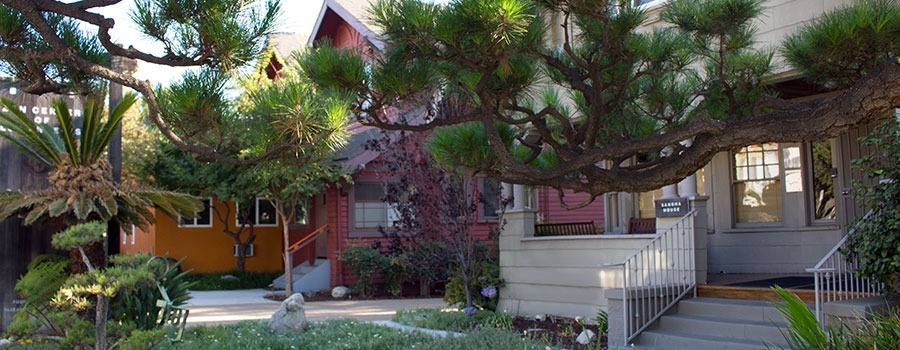
Zendo Altar
Manjusri Bodhisattva is the manifestation of prajna wisdom and maintains a constant and continuous presence in the zendo. Manjusri holds a two-edged sword which cuts through delusion (“kills delusion”) and gives rise to wisdom (“gives life”). In his left hand, Manjusri holds a scroll of sutras. The statue of Manjusri on our altar, riding on a lion, was sculpted by Yoshitaku Kuroda, the youngest brother of Maezumi Roshi.
Certain items on the altar are placed in direct line with Manjusri, and all other items in symmetry on either side of the altar. This is a general rule for altar arrangements.
In direct line with Manjusri, you will find a cup filled with water, symbolizing the water wisdom of the lineage. Next in line is the incense bowl, originally part of the Founder’s Room. The bronze pieces were all gifts of the Kuroda Family, the founding family of ZCLA.
On either side of the altar, a tall candle on the right symbolizes the light of wisdom and, on the left, a vase of flowers symbolizes impermanence or transiency. The verse in a frame requests protection while we ourselves walk the path to Buddhahood. Manjusri’s sword, the kyosaku or waking stick, is placed on one side of the altar, when it is not being used. Manjusri is flanked by greenery.
The brown mat (haishiki) in front of the altar is used by the abbot for bowing.
It is our practice to always approach the altar with utmost respect. It is important to remember, however, that we are not bowing to something outside of ourselves, but rather to our own essential nature. To bow to Manjusri is to bow as Manjusri; to bow to Buddha is to know oneself as Buddha. We are not revering something outside of ourselves, but rather we are acknowledging that our very life is the Buddha’s life. However remote this may seem to us, by bowing we open ourselves to the possibility of this realization.
